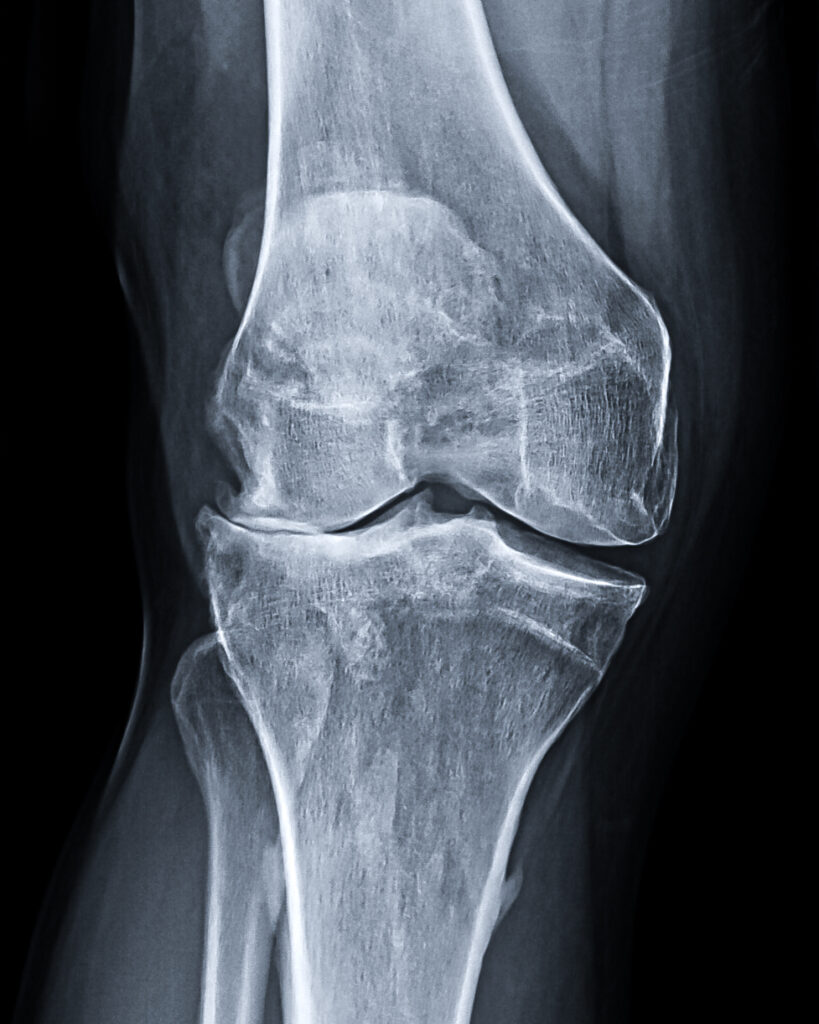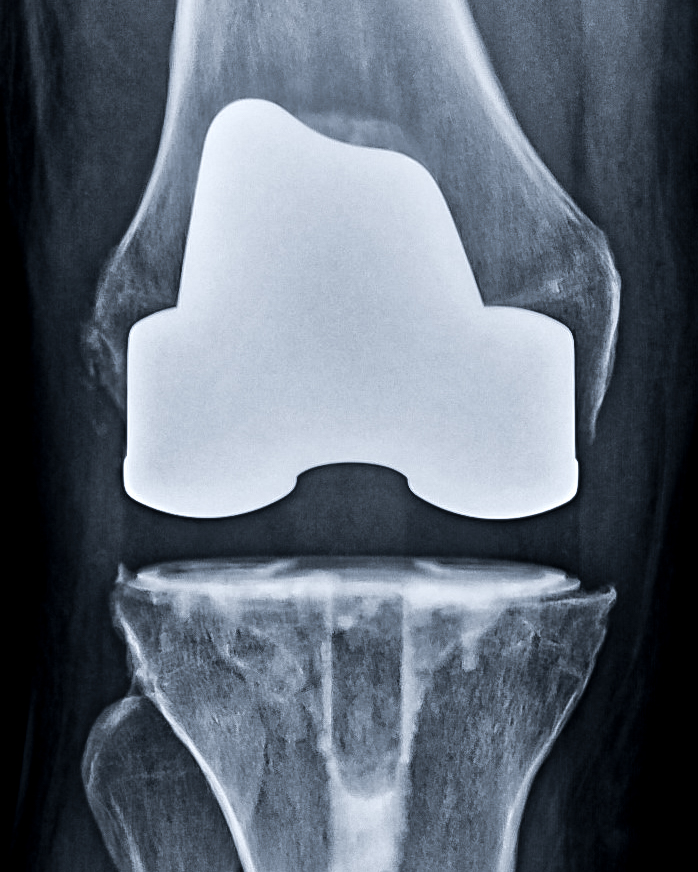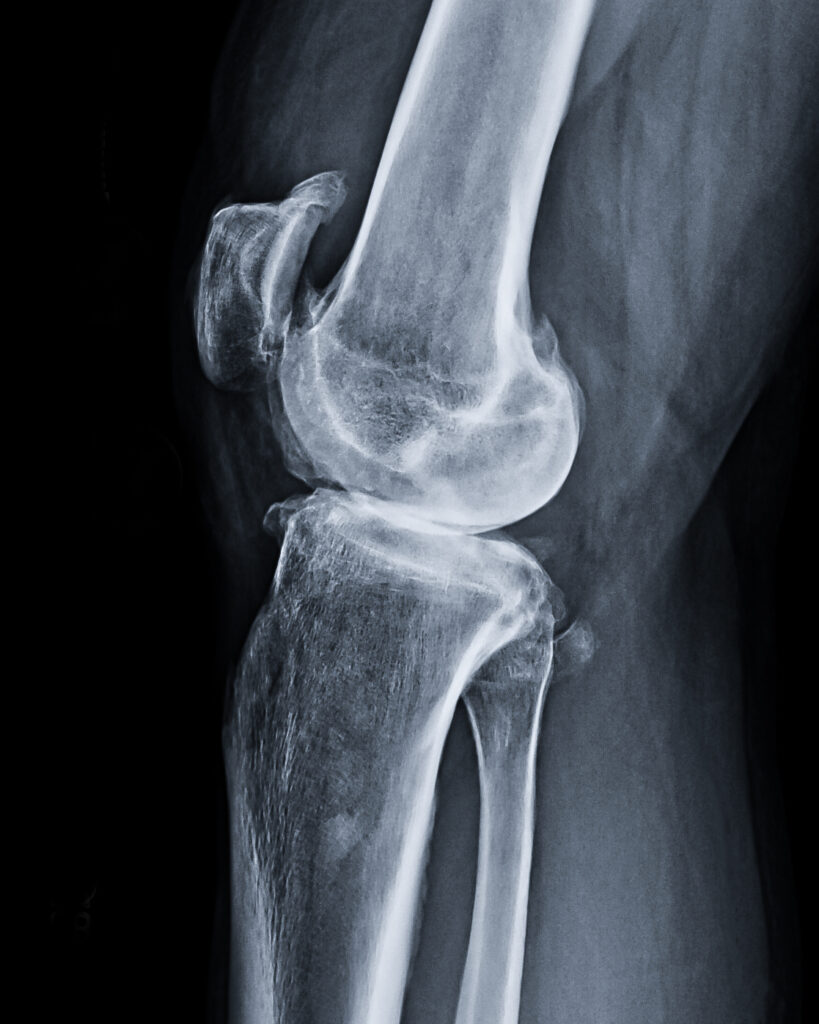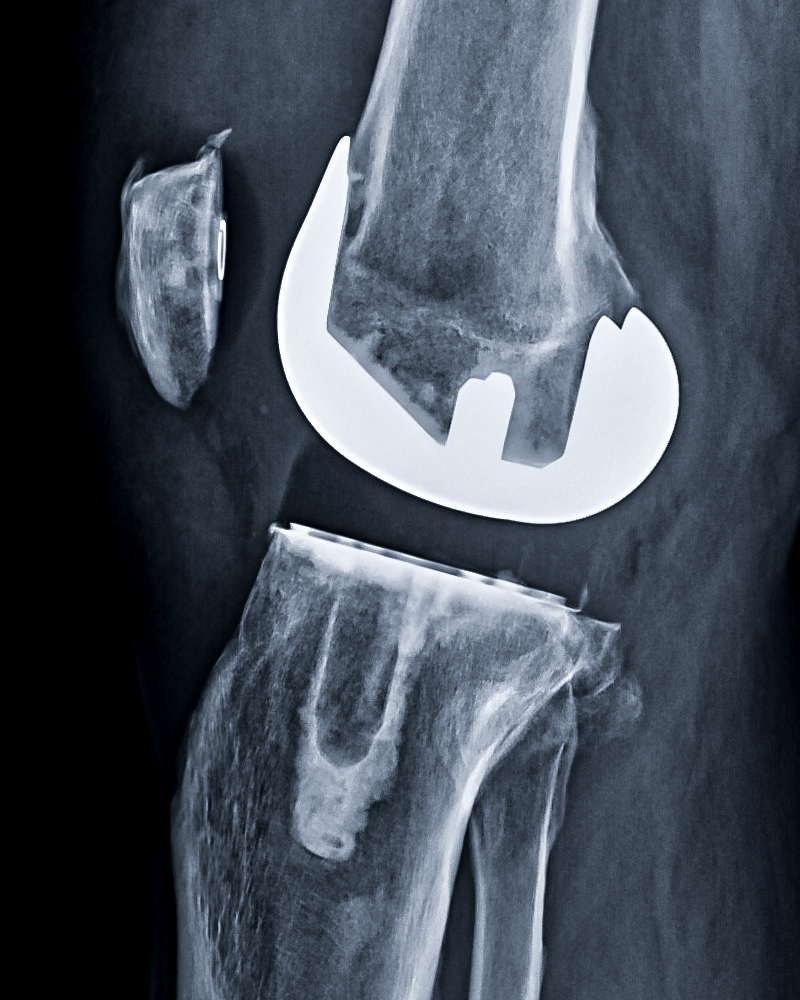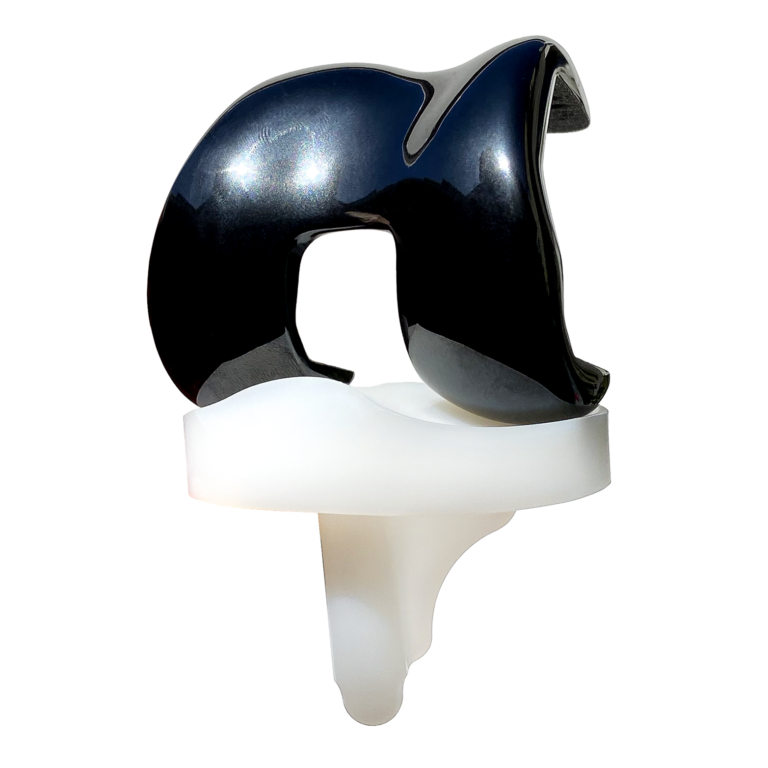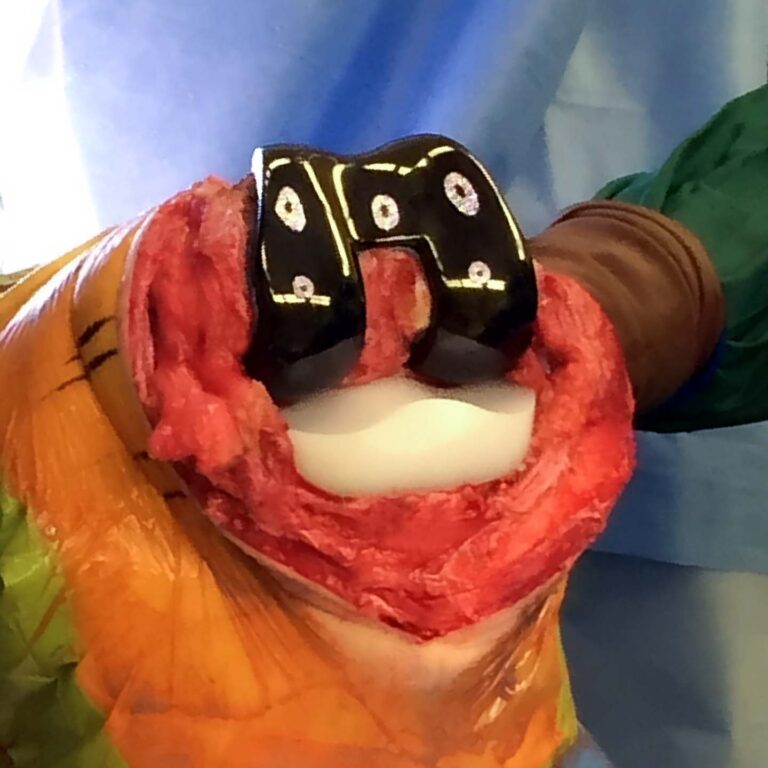Total Knee
Replacement

The knee joint is a rotating hinge joint composed of three predominant compartments: the medial compartment, the lateral compartment, and the patella-femoral compartment. If you develop arthritis in more than one of these compartments you may be a candidate for a total knee replacement surgery. Typically arthritis is manifested when a patient loses all the cartilage lining the joint, which leads to bone-on-bone rubbing or contact, which is quite painful and limiting for patients.
The goals of the knee replacement surgery are to resurface the ends of these bones so that you have smooth surfaces opposing one another during functional range of motion and when performing your activities of daily living.
Total knee replacements typically require a one-night stay in the hospital, but some patients may be candidates for outpatient surgery and same day discharge. All knee replacement patients pursue outpatient physical therapy upon their return home. Full maximum recovery typically occurs one year following total knee replacement but significant gains are made in the early post-operative period and most people return to their work at three months following their total knee replacement.
Implants and Materials
For my total knee arthroplasty procedures, I use the Smith and Nephew Legion system. I typically combine an all-polyethylene tibial component with an Oxinium femoral component. I prefer this system as it has a long track record based on registry data with excellent survivorship.
Oxinium is an oxidized zirconium that has improved wear characteristics (less debris generated with joint motion) and is biologically inert (your body does not react negatively to it). It also does not expose my patients to any cobalt, nickel, or chromium ions that may be released from other implants on the market.
Finally the survivorship of all-polyethylene tibial components has been shown to be superior to metal backed implants.


